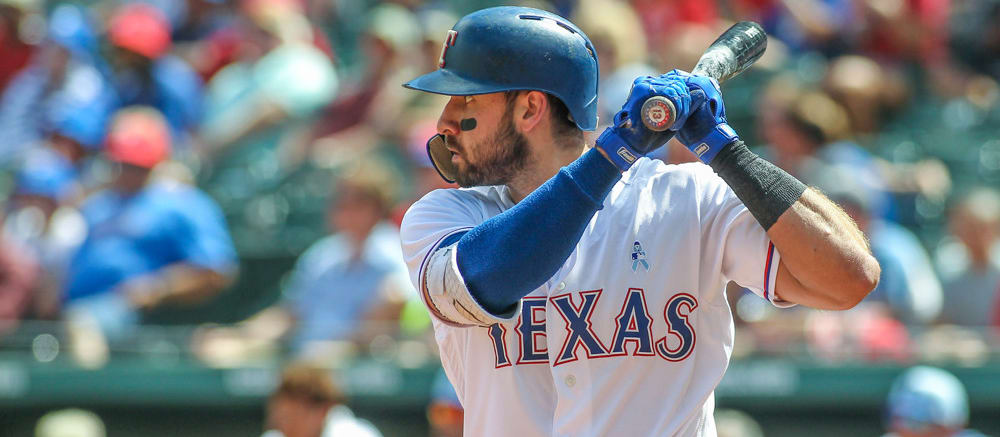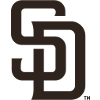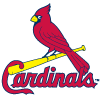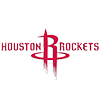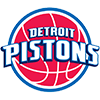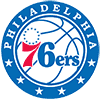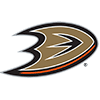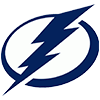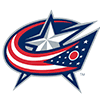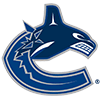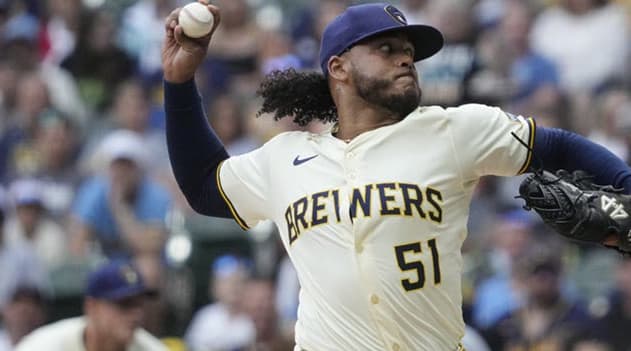We're entering one of the most exciting periods of the baseball calendar: the lead-up to the trade deadline. It's shaping up to be quite a good one, as a large number of teams should be motivated to make a move. Four of the six divisions (the AL East, AL West, NL East and NL West) have at least three teams within six games of the division lead, so there should be no shortage of buyers looking to add pieces. We've already seen some minor moves, like Atlanta's Joc Pederson acquisition, but the major moves should be here soon.
This is also one of the most critical weeks of the fantasy season. We're past the halfway point of the calendar at this point, and fantasy football content is starting to pick up, so you may not have too much time left to engage the struggling teams in your league on a deal before their managers' eyes start to wander to other sports.
Additionally, you probably only have a few more days before the big real-life trades occur. If you're trailing in the standings and need to make up meaningful ground, you'll have to take some risks, and one of the most rewarding risks you can take comes from correctly assessing that a player's value is about to change via a trade. If your trade partner values one of their guys at their current level, but you successfully predict that the player's value will be meaningfully different within a few days, you
We're entering one of the most exciting periods of the baseball calendar: the lead-up to the trade deadline. It's shaping up to be quite a good one, as a large number of teams should be motivated to make a move. Four of the six divisions (the AL East, AL West, NL East and NL West) have at least three teams within six games of the division lead, so there should be no shortage of buyers looking to add pieces. We've already seen some minor moves, like Atlanta's Joc Pederson acquisition, but the major moves should be here soon.
This is also one of the most critical weeks of the fantasy season. We're past the halfway point of the calendar at this point, and fantasy football content is starting to pick up, so you may not have too much time left to engage the struggling teams in your league on a deal before their managers' eyes start to wander to other sports.
Additionally, you probably only have a few more days before the big real-life trades occur. If you're trailing in the standings and need to make up meaningful ground, you'll have to take some risks, and one of the most rewarding risks you can take comes from correctly assessing that a player's value is about to change via a trade. If your trade partner values one of their guys at their current level, but you successfully predict that the player's value will be meaningfully different within a few days, you have the potential for a big gain. Time is getting very tight for that kind of gamble, however, as the valuation gaps should disappear once it's certain that the player is in fact on the move.
I mentioned a few categories of players to speculate on back in late June, when I advocated for getting out ahead of the trade market, but it's worth quickly rehashing those categories here. The best group to buy are starting pitchers on selling teams with hitters' parks. The Rockies and Orioles are the most obvious examples here, but speculating on Reds' starters may not be a bad idea, as they're less than certain to actually deal, which could lead to a bigger profit if they do indeed sell. On the flip side, low-end regulars and closers on bad teams are likely about to see their values collapse, as they could become part-time players and setup men for contenders soon. As for star hitters on selling teams, their current park factor plays a big role. All those hitters could soon see a big upgrade in the talent that surrounds them, a factor which could either be amplified or offset depending on the difference between their current and future homes.
This week's risers section kicks off with one such hitter who could potentially be on the move alongside a handful of young players who have seen their stocks improve significantly in recent weeks.
RISERS
 Joey Gallo, OF, Rangers: Gallo has always been a player of extremes. Through the end of last season, he was a career .208 hitter who struck out 37.6 percent of the time, yet he was still solidly above average at the plate (111 wRC+) thanks primarily to a .290 ISO, a mark which trailed only Mike Trout among those who came to the plate at least 1,500 times since his debut in 2015. That mark was well earned, as his 20.7 percent barrel rate led all hitters in that same group over that stretch. This year, he's toned down the negative extremes somewhat while keeping the positive ones, thanks perhaps to changes in both his stance and his bat, which he made over the offseason. That's not to say he no longer has strikeout issues, but his 31.1 percent strikeout rate this season is down to a much more normal level for a slugger. He's combined that mark with a career-best 20.0 percent walk rate, which beats all other qualified hitters by more than two points and has led to another career high in his .394 on-base percentage. He's done all that without sacrificing his power, as his 24 homers tie him for fifth in the league. Ten of those homers have come in his last 11 games, a run which could increase his trade value and potentially lead to a move to a better lineup and a more hitter-friendly park.
Joey Gallo, OF, Rangers: Gallo has always been a player of extremes. Through the end of last season, he was a career .208 hitter who struck out 37.6 percent of the time, yet he was still solidly above average at the plate (111 wRC+) thanks primarily to a .290 ISO, a mark which trailed only Mike Trout among those who came to the plate at least 1,500 times since his debut in 2015. That mark was well earned, as his 20.7 percent barrel rate led all hitters in that same group over that stretch. This year, he's toned down the negative extremes somewhat while keeping the positive ones, thanks perhaps to changes in both his stance and his bat, which he made over the offseason. That's not to say he no longer has strikeout issues, but his 31.1 percent strikeout rate this season is down to a much more normal level for a slugger. He's combined that mark with a career-best 20.0 percent walk rate, which beats all other qualified hitters by more than two points and has led to another career high in his .394 on-base percentage. He's done all that without sacrificing his power, as his 24 homers tie him for fifth in the league. Ten of those homers have come in his last 11 games, a run which could increase his trade value and potentially lead to a move to a better lineup and a more hitter-friendly park.
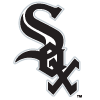 Andrew Vaughn, 1B/OF, White Sox: There was a bit of a gap between the more scouting-focused and the more projection-focused analysis of Vaughn heading into the year. Those who leaned toward the scouts saw potential for plus contact and power, tools that made him the third-overall pick in 2019. Those who listen more to the projections noted that they universally projected him to be a below-average hitter this season, ranging from a 68 wRC+ according to Steamer and a 99 wRC+ according to THE BAT. (A player can be as talented as you want, but if he's only played in 55 professional games, none of which came above High-A, the projections aren't going to be too optimistic.) For the bulk of the season, the pessimistic outlook appeared more accurate. In his first 63 games, he hit just .222/.299/.389 with six homers and a 27.2 percent strikeout rate, a mark that came in far worse than his 15.5 percent strikeout rate in the minors. He's shown far more over his last 15 games, however, homering four times and cutting his strikeout rate to 13.3 percent while slashing .327/.350/.600. It's certainly not a large sample, but when a player rated as highly as Vaughn was heading into the year starts showing signs like this, it's worth taking notice.
Andrew Vaughn, 1B/OF, White Sox: There was a bit of a gap between the more scouting-focused and the more projection-focused analysis of Vaughn heading into the year. Those who leaned toward the scouts saw potential for plus contact and power, tools that made him the third-overall pick in 2019. Those who listen more to the projections noted that they universally projected him to be a below-average hitter this season, ranging from a 68 wRC+ according to Steamer and a 99 wRC+ according to THE BAT. (A player can be as talented as you want, but if he's only played in 55 professional games, none of which came above High-A, the projections aren't going to be too optimistic.) For the bulk of the season, the pessimistic outlook appeared more accurate. In his first 63 games, he hit just .222/.299/.389 with six homers and a 27.2 percent strikeout rate, a mark that came in far worse than his 15.5 percent strikeout rate in the minors. He's shown far more over his last 15 games, however, homering four times and cutting his strikeout rate to 13.3 percent while slashing .327/.350/.600. It's certainly not a large sample, but when a player rated as highly as Vaughn was heading into the year starts showing signs like this, it's worth taking notice.
 Rhys Hoskins, 1B, Phillies: Hoskins failed to live up to expectations for most of the first half. Typically, he's demonstrated excellent plate discipline along with plenty of power but not an elite amount for a first baseman. Through his first 79 games this year, he'd hit 17 homers, but his plate discipline seemed to have evaporated, as he struck out 26.2 percent of the time while walking at an 8.7 percent clip, numbers that fell well short of his 23.4 percent strikeout rate and 15.3 percent walk rate in his first four years in the league. He's showing signs of his old self over his last 12 games, however, combining a 22.0 percent strikeout rate with a 16.0 percent walk rate while slashing .325/.440/.750. He now has his highest hard-hit rate ever (45.7 percent) to go along with his highest xSLG (.507) since his impressive 50-game debut back in 2017. His quality of contact was already similarly strong before that recent hot streak, so if he's able to maintain it while getting back to his usual strikeout and walk numbers, he could be on the cusp of one of the better half-seasons of his career.
Rhys Hoskins, 1B, Phillies: Hoskins failed to live up to expectations for most of the first half. Typically, he's demonstrated excellent plate discipline along with plenty of power but not an elite amount for a first baseman. Through his first 79 games this year, he'd hit 17 homers, but his plate discipline seemed to have evaporated, as he struck out 26.2 percent of the time while walking at an 8.7 percent clip, numbers that fell well short of his 23.4 percent strikeout rate and 15.3 percent walk rate in his first four years in the league. He's showing signs of his old self over his last 12 games, however, combining a 22.0 percent strikeout rate with a 16.0 percent walk rate while slashing .325/.440/.750. He now has his highest hard-hit rate ever (45.7 percent) to go along with his highest xSLG (.507) since his impressive 50-game debut back in 2017. His quality of contact was already similarly strong before that recent hot streak, so if he's able to maintain it while getting back to his usual strikeout and walk numbers, he could be on the cusp of one of the better half-seasons of his career.
 Brandon Lowe, 2B/OF, Rays: Lowe featured in this column as a faller less than a month ago, as a poor start to the season combined with the arrival of Wander Franco looked sure to cut into his playing time. He might be a player who responds well to that sort of challenge, however, as he's done nothing but hit since that point. In his last 16 games, he's slashing .286/.426/.816 while homering eight times. Lowe is losing at least a bit of playing time, as he's sat five times in 20 games since Franco's arrival, though going from starting 82 percent of the time early in the season to 75 percent of the time now isn't a huge change. He should continue featuring regularly in the lineup as long as he continues making the kind of contact he's made lately, as he owns an incredible 29.0 percent barrel rate and 61.3 percent hard-hit rate over that recent hot streak. Lowe is still a flawed player, as that excellent stretch comes with a 29.5 percent strikeout rate, and the Rays are deep enough that they can cut his playing time if he slumps again, but fears of him slipping into a significantly smaller role due to his mediocre performance were apparently premature.
Brandon Lowe, 2B/OF, Rays: Lowe featured in this column as a faller less than a month ago, as a poor start to the season combined with the arrival of Wander Franco looked sure to cut into his playing time. He might be a player who responds well to that sort of challenge, however, as he's done nothing but hit since that point. In his last 16 games, he's slashing .286/.426/.816 while homering eight times. Lowe is losing at least a bit of playing time, as he's sat five times in 20 games since Franco's arrival, though going from starting 82 percent of the time early in the season to 75 percent of the time now isn't a huge change. He should continue featuring regularly in the lineup as long as he continues making the kind of contact he's made lately, as he owns an incredible 29.0 percent barrel rate and 61.3 percent hard-hit rate over that recent hot streak. Lowe is still a flawed player, as that excellent stretch comes with a 29.5 percent strikeout rate, and the Rays are deep enough that they can cut his playing time if he slumps again, but fears of him slipping into a significantly smaller role due to his mediocre performance were apparently premature.
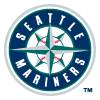 Logan Gilbert, SP, Mariners: Gilbert came with a fair amount of hype when he was first called up in mid May, but he didn't do much to justify it in his first three outings, failing to last more than four innings in any of them while struggling to a 7.59 ERA. Ever since then, however, he's been excellent. He's allowed more than two earned runs in just one of his last seven starts, posting a 2.37 ERA and 0.84 WHIP while backing up those numbers with a strong combination of a 28.8 percent strikeout rate and 5.5 percent walk rate. (For comparison, that looks a whole lot like Aaron Nola's 29.5 percent strikeout rate and 5.4 percent walk rate on the season, or Yu Darvish's 29.8 percent strikeout rate and 5.7 percent walk rate.) One knock on Gilbert is his below-average 38.9 percent groundball rate over that stretch, but that's far from a terrible number. Gilbert produced strong strikeout and walk rates throughout his time in the minors and comes with plenty of pedigree as the 14th pick in the 2018 draft, so there's plenty of reason to believe he should be able to maintain his success in the second half.
Logan Gilbert, SP, Mariners: Gilbert came with a fair amount of hype when he was first called up in mid May, but he didn't do much to justify it in his first three outings, failing to last more than four innings in any of them while struggling to a 7.59 ERA. Ever since then, however, he's been excellent. He's allowed more than two earned runs in just one of his last seven starts, posting a 2.37 ERA and 0.84 WHIP while backing up those numbers with a strong combination of a 28.8 percent strikeout rate and 5.5 percent walk rate. (For comparison, that looks a whole lot like Aaron Nola's 29.5 percent strikeout rate and 5.4 percent walk rate on the season, or Yu Darvish's 29.8 percent strikeout rate and 5.7 percent walk rate.) One knock on Gilbert is his below-average 38.9 percent groundball rate over that stretch, but that's far from a terrible number. Gilbert produced strong strikeout and walk rates throughout his time in the minors and comes with plenty of pedigree as the 14th pick in the 2018 draft, so there's plenty of reason to believe he should be able to maintain his success in the second half.
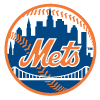 Tylor Megill, SP, Mets: Megill didn't come with nearly the same prospect pedigree as Gilbert, as he was selected 230th overall in the same draft, but what he's done in his first five major-league starts is hard to ignore. His 2.63 ERA is probably better than he deserves, but his 3.71 FIP and 3.79 xFIP back up the idea that he's a very solid option. The 25-year-old righty has gotten to those numbers via a combination of a strong strikeout rate (27.7 percent) and groundball rate (48.4 percent). Among pitchers who have made at least five starts this season, only three others (Zack Wheeler, Corbin Burnes and Dustin May) have exceeded both of those numbers. Megill didn't generate much hype in prospect circles prior to his debut, but not allowing much contact and keeping what contact you do allow on the ground is a very sustainable path toward success. As long as Megill remains similarly effective going forward, he should be able to keep his place in a Mets rotation that simply can't stay healthy.
Tylor Megill, SP, Mets: Megill didn't come with nearly the same prospect pedigree as Gilbert, as he was selected 230th overall in the same draft, but what he's done in his first five major-league starts is hard to ignore. His 2.63 ERA is probably better than he deserves, but his 3.71 FIP and 3.79 xFIP back up the idea that he's a very solid option. The 25-year-old righty has gotten to those numbers via a combination of a strong strikeout rate (27.7 percent) and groundball rate (48.4 percent). Among pitchers who have made at least five starts this season, only three others (Zack Wheeler, Corbin Burnes and Dustin May) have exceeded both of those numbers. Megill didn't generate much hype in prospect circles prior to his debut, but not allowing much contact and keeping what contact you do allow on the ground is a very sustainable path toward success. As long as Megill remains similarly effective going forward, he should be able to keep his place in a Mets rotation that simply can't stay healthy.
FALLERS
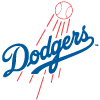 Cody Bellinger, 1B/OF, Dodgers: It might be time to start worrying about Bellinger. He's only played in 37 games this season while dealing with multiple injuries, and those injuries could partially excuse some poor performance, but his .168/.284/.282 slash line is nowhere near expectations. There's been some bad luck involved in the form of a .217 BABIP, but raising his average to match his .208 xBA wouldn't be close to good enough, either. He's making less contact than ever before, as his 27.7 percent strikeout rate is a career worst and is more than 10 points worse than his marks from both of the last two seasons. He's also making worse contact than ever, as his 7.8 percent barrel rate and 28.9 hard-hit rate are both career lows. That hard-hit rate is perhaps the most concerning element of his profile, as it would rank sixth-worst among qualified batters. That kind of contact best suits a slap-hitting singles machine, not someone whose 23.2 degree average launch angle would rank second among that same group. Bellinger is too talented to stay this bad for too much longer, but when you consider that he'd already seen his wRC+ drop from 162 in 2019 to 114 last year, this starts to look like a potential multiyear slide. A return to last year's diminished version of Bellinger might be about as optimistic as we can hope for in the second half.
Cody Bellinger, 1B/OF, Dodgers: It might be time to start worrying about Bellinger. He's only played in 37 games this season while dealing with multiple injuries, and those injuries could partially excuse some poor performance, but his .168/.284/.282 slash line is nowhere near expectations. There's been some bad luck involved in the form of a .217 BABIP, but raising his average to match his .208 xBA wouldn't be close to good enough, either. He's making less contact than ever before, as his 27.7 percent strikeout rate is a career worst and is more than 10 points worse than his marks from both of the last two seasons. He's also making worse contact than ever, as his 7.8 percent barrel rate and 28.9 hard-hit rate are both career lows. That hard-hit rate is perhaps the most concerning element of his profile, as it would rank sixth-worst among qualified batters. That kind of contact best suits a slap-hitting singles machine, not someone whose 23.2 degree average launch angle would rank second among that same group. Bellinger is too talented to stay this bad for too much longer, but when you consider that he'd already seen his wRC+ drop from 162 in 2019 to 114 last year, this starts to look like a potential multiyear slide. A return to last year's diminished version of Bellinger might be about as optimistic as we can hope for in the second half.
 Sandy Alcantara, SP, Marlins: Alcantara really ought to be able to strike out more batters. His average fastball velocity of 97.7 mph trails only Jacob deGrom among qualified starters. Six of the top nine pitchers in that category have strikeout rates north of 30 percent, but you have to drop all the way down to Antonio Senzatela in 20th to find one with a strikeout rate lower than Alcantara's 21.3 percent mark. It looked as though Alcantara was making some improvement in that category early in the season, as his 23.3 percent strikeout rate through his first 15 starts would have been his best mark since his 8.1-inning debut back in 2017. He's fallen off significantly over his last five outings, however, striking out just 15.1 percent of opposing batters. When you add in that his walk rate has jumped from 6.7 over the former stretch to 10.1 percent over the latter, the trend starts to look particularly worrisome. He hasn't been completely punished, as his 3.76 ERA over his last five starts is still a fine number, but a merely good ERA alongside a low strikeout rate isn't going to excite fantasy teams, and that strikeout and walk combination could foreshadow some more significant struggles in the near future.
Sandy Alcantara, SP, Marlins: Alcantara really ought to be able to strike out more batters. His average fastball velocity of 97.7 mph trails only Jacob deGrom among qualified starters. Six of the top nine pitchers in that category have strikeout rates north of 30 percent, but you have to drop all the way down to Antonio Senzatela in 20th to find one with a strikeout rate lower than Alcantara's 21.3 percent mark. It looked as though Alcantara was making some improvement in that category early in the season, as his 23.3 percent strikeout rate through his first 15 starts would have been his best mark since his 8.1-inning debut back in 2017. He's fallen off significantly over his last five outings, however, striking out just 15.1 percent of opposing batters. When you add in that his walk rate has jumped from 6.7 over the former stretch to 10.1 percent over the latter, the trend starts to look particularly worrisome. He hasn't been completely punished, as his 3.76 ERA over his last five starts is still a fine number, but a merely good ERA alongside a low strikeout rate isn't going to excite fantasy teams, and that strikeout and walk combination could foreshadow some more significant struggles in the near future.
 Joey Wendle, 2B/3B/SS, Rays: While Brandon Lowe, as noted above, hasn't lost a meaningful number of at-bats in the wake of Wander Franco's arrival, Wendle's role has been reduced. He had something more than a platoon role early in the season, starting against 14 of 30 lefties prior to Franco's promotion, but he's started against just one of nine since Franco showed up. That downturn in playing time also corresponds to an extended cold stretch for the veteran infielder. Wendle did earn his first All-Star nod this season, though that was mainly due to his performances in his first 46 games, a stretch in which he hit .311/.368/.547 with six homers. Over his last 32 games, he's hit a far worse .241/.306/.330 with just a single home run. He's also seen his strikeout rate jump significantly, up from 19.6 percent over the former stretch to 25.8 percent over the latter. There's still enough here to keep Wendle interesting in larger formats, especially given his positional versatility, but his career 106 wRC+ isn't anything special, so it would hardly be a surprise if his playing time continues to dip in the second half.
Joey Wendle, 2B/3B/SS, Rays: While Brandon Lowe, as noted above, hasn't lost a meaningful number of at-bats in the wake of Wander Franco's arrival, Wendle's role has been reduced. He had something more than a platoon role early in the season, starting against 14 of 30 lefties prior to Franco's promotion, but he's started against just one of nine since Franco showed up. That downturn in playing time also corresponds to an extended cold stretch for the veteran infielder. Wendle did earn his first All-Star nod this season, though that was mainly due to his performances in his first 46 games, a stretch in which he hit .311/.368/.547 with six homers. Over his last 32 games, he's hit a far worse .241/.306/.330 with just a single home run. He's also seen his strikeout rate jump significantly, up from 19.6 percent over the former stretch to 25.8 percent over the latter. There's still enough here to keep Wendle interesting in larger formats, especially given his positional versatility, but his career 106 wRC+ isn't anything special, so it would hardly be a surprise if his playing time continues to dip in the second half.
 Willi Castro, 2B/3B/SS, Tigers: Very few would have expected Castro to repeat his .349/.381/.550 line from last season, as that came in just 36 games and was propped up by an obviously unsustainable .448 BABIP, but he was a popular pick nonetheless on the theory that he could regress quite a bit and still remain a useful player, especially given that his age (24) meant he could grow a bit to counteract some of that regression. That hasn't come close to happening. Instead, he's hit so poorly that even the rebuilding Tigers decided he shouldn't get the chance to sort things out at the big-league level, sending him to Triple-A Toledo on Friday. It's hard to argue with that decision given his .214/.278/.341 slash line in 280 plate appearances. It's not all bad, as both his 6.4 percent walk rate and 25.7 percent strikeout rate, while poor, represent steps in the right direction from last season, but his contact quality simply hasn't been big-league level, with his 26.5 percent hard-hit rate ranking sixth-worst among players with at least 280 plate appearances.
Willi Castro, 2B/3B/SS, Tigers: Very few would have expected Castro to repeat his .349/.381/.550 line from last season, as that came in just 36 games and was propped up by an obviously unsustainable .448 BABIP, but he was a popular pick nonetheless on the theory that he could regress quite a bit and still remain a useful player, especially given that his age (24) meant he could grow a bit to counteract some of that regression. That hasn't come close to happening. Instead, he's hit so poorly that even the rebuilding Tigers decided he shouldn't get the chance to sort things out at the big-league level, sending him to Triple-A Toledo on Friday. It's hard to argue with that decision given his .214/.278/.341 slash line in 280 plate appearances. It's not all bad, as both his 6.4 percent walk rate and 25.7 percent strikeout rate, while poor, represent steps in the right direction from last season, but his contact quality simply hasn't been big-league level, with his 26.5 percent hard-hit rate ranking sixth-worst among players with at least 280 plate appearances.


